Business Maverick, Media, Politics
A Decade in Pictures: 2001
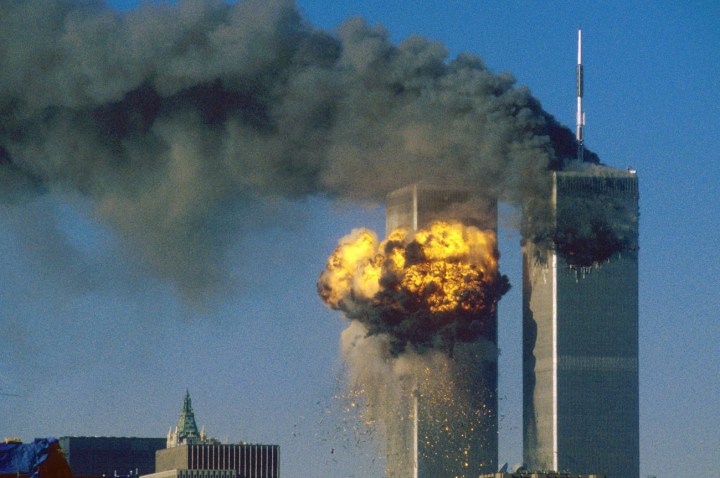
It started as a mildly to seriously annoying year, with installment of George W Bush as US President (because his dad happened to have appointed the majority of Supreme Court judges) and ended in fear of looming war between civilisations. What a crazy year 2001 turned out to be. By BRANKO BRKIC.
15 January: Wikipedia launches. As it always happens with new and outrageously original ideas, a crowd-sourced encyclopaedia seemed destined to be a short-lived project. Well, while some may still make a sour face when Wikipedia is mentioned, it has become nothing short of a global phenomenon.
Photo: Wikipedia founder and chairman of Wikia.com Jimmy Wales speaks during a news conference in Tokyo, 8 March 2007. REUTERS/Michael Caronna.
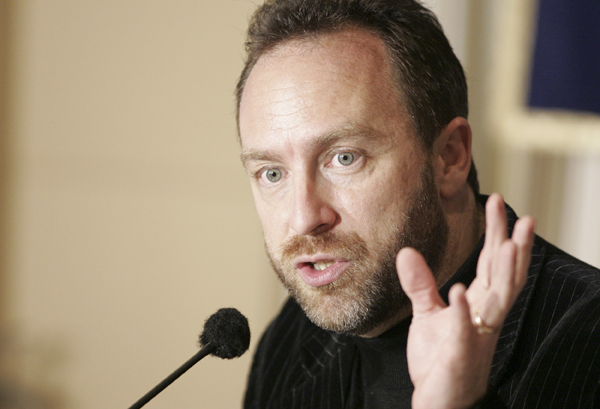
20 January: George W Bush sworn in as 43rd President of the United States. Yippee.
As we watched in disbelief the US’s last presidential election being, well, stolen, little did we know that he would not only prove hopelessly out of his depth, but also dangerously so. Sadly, our worries soon became desperation in the wake of a stream of disastrous decisions, too numerous to mention in this limited overview.
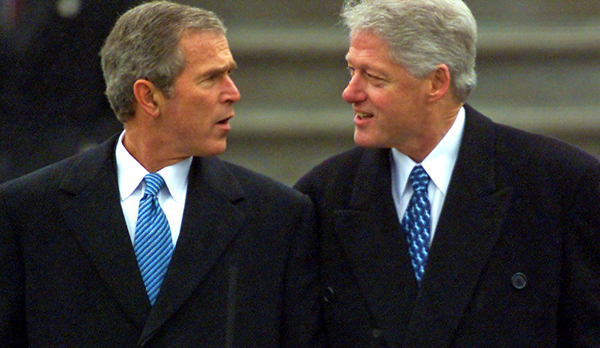
Photo: US President George W. Bush and former president Bill Clinton talk as Clinton leaves the Capitol Building following Bush’s inauguration in Washington, 20 January 2001.
Watch George W Bush’s inauguration speech:
23 March: Mir crashes down to Earth.
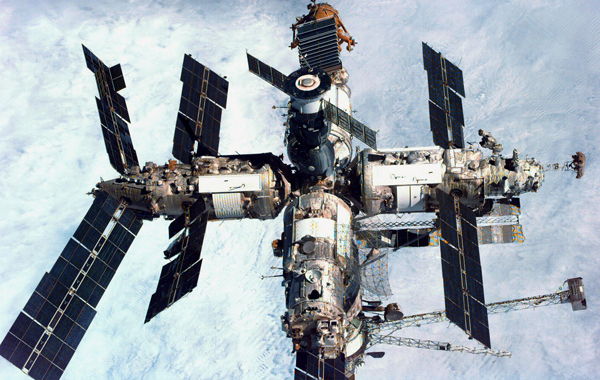
Photo: Mir space station in 1998.
For decades the Mir station was an object of great pride for the Soviet Union and Russia, a sole permanently-inhabited object in space. But Russia’s dried-up funds and commitment to the International Space Station sounded the death knell for the aging leviathan. De-orbiting was conducted in three stages, and completed safely. Unlike the chaotic failure of the previous space giant, Skylab, that landed in the Australian desert in 1979 after months of guessing, Mir’s surviving fragments fell into the emptiness of the Southern Pacific.
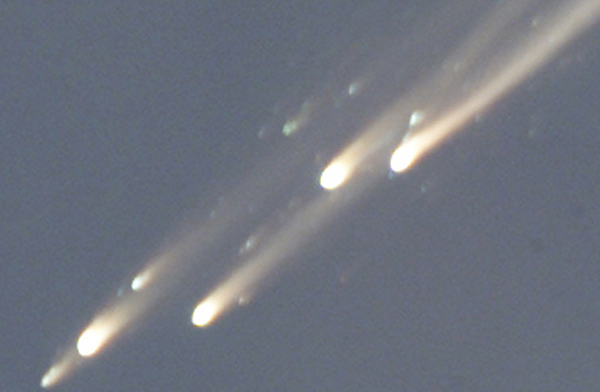
Photo 02: Pieces of the Russian space station Mir race across the sky above Fiji into Earth’s atmosphere 23 March 2001. Mir plunged to earth on Friday after Russian Mission Control fired engines to nudge it out of the orbit it had kept for 15 years.
6 May: Dennis Tito returns to Earth
Humanity’s first space tourist, a seriously wealthy American entrepreneur Dennis Tito paid “tourism” company Space Adventures a reported $20 million for the pleasure. After spending 7 days, 22 hours and 4 minutes in space and orbiting Earth 128 times, he landed his place in history. Nasa people were not amused, needless to say.

Photo: The world’s first space tourist Dennis Tito (C) flies into the International Space Station as Russian Talgat Musabayev (R) looks on and the station’s commander Yuri Usachev (L) welcomes them, 30 April 2001. Tito and the two Russian cosmonauts Musabayev and Yuri Baturin accompanying him had spent a week as “guests” of Usachev and his two American crewmates on board the ISS. (Reuters)
1 June: Nepalese royal family slaughtered
After his father, beloved King Birendra, prevented him from marrying the woman he loved, Devyani Rana, broken-hearted Nepalese Crown Prince Dipendra of Nepal felt not only that his life was not worth living anymore, but also those of his father, mother and everyone else in sight. Dipendra botched his suicide after the act, and died three days later – during which he was officially the new king. The unprecedented tragedy saw his uncle, deeply unpopular Gyanendra take over the throne and usher in a decade of political and social turmoil for the Himalayan state.
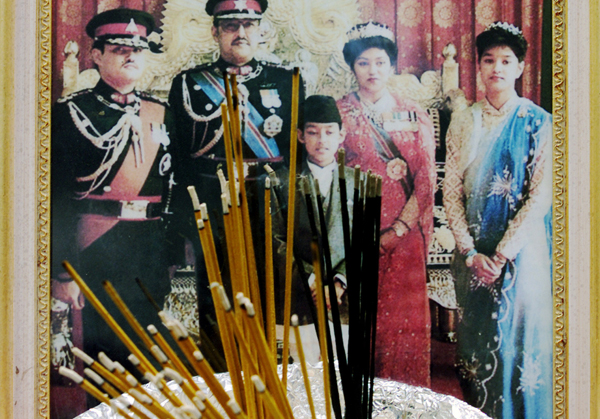
Photo: Joss sticks are put in front of a group photo of Nepal’s royal family during a mourning service in Hong Kong on 4 June 2001. Many Nepalese, most of them former Gurkha soldiers serving in the erstwhile British colony, attended the service.
11 June: Timothy McVeigh executed.
More than six years after his heinous murder of 168 and the injury 450 people in the bombing of the Alfred P. Murrah Building in Oklahoma City, the monster himself was terminated. A disaffected Iraqi War veteran, McVeigh committed the greatest act of domestic terror in the US history when he detonated a truck laden with fertiliser-based explosive on 19 April 1995, exactly two years after the FBI raided the Branch Davidian complex in Waco, Texas, killing cult leader David Koresh and about 80 of his followers.
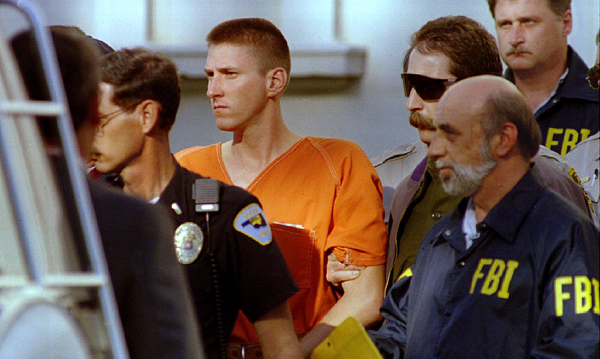
Photo: Timothy McVeigh is escorted from the Noble County Courthouse in Perry, Oklahoma, by FBI agents and local police, 21 April 1995. McVeigh was transported to Oklahoma City for arraignment on the bombing charges.
9 September: Ahmed Shah Massoud, military commander of the Afghan Northern Alliance, is killed by an Al Qaeda-trained suicide bomber.
At the time, Massoud’s murder was noted as an important event by only the most-informed watchers of Afghan affairs. Little did we know then that the true context of a much larger conflict between Al Qaeda and everyone else would become gigantically visible only two days later and that Massoud’s Northern Alliance would become US’s main partner in the invasion of Afghanistan and subsequent ousting of the Taliban from power.
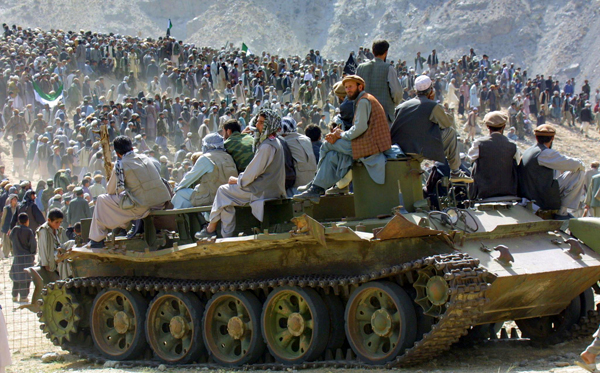
Photo: People climb up to Saricha village, in the heart of the Panjshir, some 160km from Kabul, 16 September 2001 to bury Ahmad Shah Masood, after a ceremony in Jangalak. Masood, the “Lion of Panjsher”, was officially declared dead on 15 September from wounds suffered in a suicide bomb attack by two men posing as Arab journalists. He was 48. REUTERS/POOL/Alexander Nemenov.
11 September: Well, we all know what happened on that day.
Main photo of the 2001 story: The World Trade Center south tower (L) bursts into flames after being struck by hijacked United Airlines Flight 175 as the north tower burns following an earlier attack by a hijacked airliner in New York City. The stunning aerial assaults on the huge commercial complex, where more than 40,000 people worked on an ordinary day, were part of a coordinated attack aimed at the nation’s financial heart. They destroyed one of America’s most dramatic symbols of power and financial strength and left New York reeling. FOURTH OF SEVEN PHOTOGRAPHS REUTERS/Sean Adair
Photo: Deer in lights: US President George W Bush listens as White House chief of staff Andrew Card informs him of a second plane hitting the World Trade Center. Bush was conducting a reading seminar at the Emma E. Booker Elementary School in Sarasota, Florida, 11 September 2001.
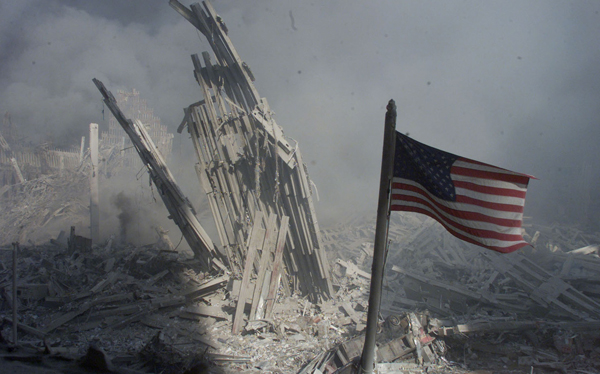
Photo: An American flag flies near the base of the destroyed World Trade Center in New York. REUTERS/Peter Morgan.
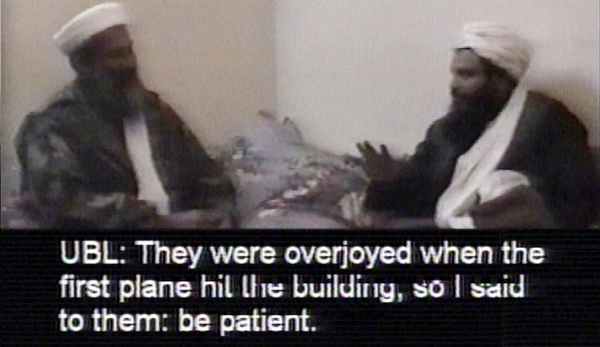
Photo: Osama bin Laden is shown in this video image released by the US defence department, 13 December 2001. The translation of the videotape has Bin Laden talking about the collapse of the World Trade Center, saying “They were overjoyed when the first plane hit the building, so I said to them: be patient.” REUTERS
7 October: The US invades Afghanistan
Soon after 9/11, the US and the world ascertained it was an Al Qaeda attack and the Taliban were sheltering them in Afghanistan. Military preparations for Operation Enduring Freedom began just days after the World Trade Centre towers fell; Kabul fell on 12 November 2001. Many thought the war was over, but they were, of course, wrong; the war in Afghanistan is still very much on.

Photo: Pakistani men in Quetta watch television coverage of US President George W Bush announcing the airstrikes on Afghanistan 7 October 2001
10 November: China is admitted to the World Trade Organisation
After 15 years of negotiations, China’s Integration into the global economy was finalised, at the WTO conference in Doha, Qatar.
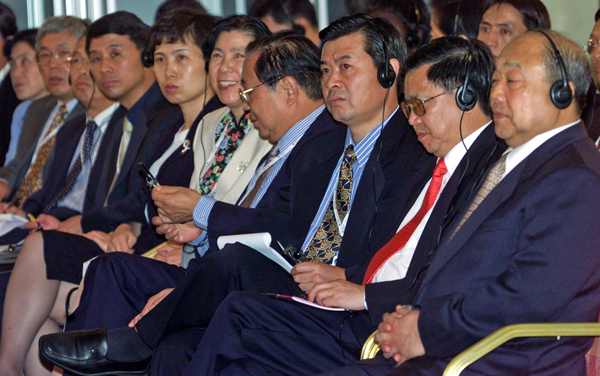
Photo: The Chinese delegation listen during the World Trade Organisation’s (WTO) conference in Doha, 10 November 2001. China completed a 15-year quest to join the World Trade Organisation bringing a market of 1.3 billion people into the global trading system and changing the way Beijing does business with the world. Ministers of the 142-strong world trade body stood and applauded after approving by acclamation the proposal to admit China, the world’s most populous nation and until then a huge missing link in the WTO’s membership. REUTERS/Nayef Hashlamoun.
2 December: Enron files for bankruptcy
It was the biggest bankruptcy to date, but not really a systemic threat to markets. However, Enron’s collapse captured global attention because of the sheer avarice of its executives, the company’s political influence and its “smartest guys in the room” moniker. It turned out that the company that was named six times in the row “the most innovative in the world” by Fortune magazine was not much more than an elaborate con, helped by its auditors, Anderson, which subsequently itself collapsed.
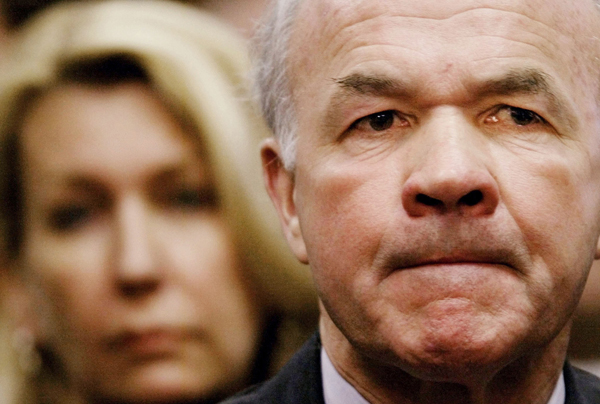
Photo: Former Enron chairman Kenneth Lay is pictured in this 12 February 2002 file photo during a Congressional hearing at which he refused to testify, citing his Fifth Amendment rights against self-incrimination, on Capitol Hill. Lay, who ran the company as it grew into an energy trading giant then fell into ruins as a symbol of corporate greed, was indicted on 7 July 2004 for his role in the scandal. A federal grand jury charged Lay in a sealed indictment that contained undisclosed criminal charges for alleged misdeeds before the company fell into bankruptcy in December 2001. Behind Lay at left is his wife, Linda. Lay died while on vacation, 5th July 2006. REUTERS/Win McNamee.
11 December: Zacarias Moussaoui, indicted as a 9/11 conspirator
Dubbed “the 20th conspirator”, Moussaoui changed positions several times, from claiming he was planning an attack of his own to eventually fully admitting to the charges, possibly in exchange for getting life in prison without parole and not the death penalty.
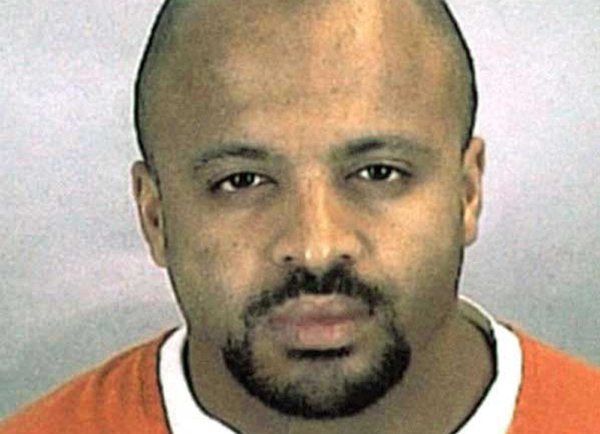
Photo: A federal judge ruled on 13 June 2002 that Zacarias Moussaoui was mentally competent to fire his court-appointed lawyers and represent himself at trial. US District Judge Leonie Brinkema said she felt a report by a court-appointed psychiatrist and comments made by Moussaoui’s jailers showed the French citizen was competent to proceed on his own and represent himself. Moussaoui is shown in this undated police photograph. REUTERS/Sherburne County Sheriff’s Office
13 December: Indian parliament comes under attack
In an unprecedented move, and possibly inspired by the 9/11 attacks, five Islamic terrorists infiltrated the Indian parliament’s compound, intent on causing as much devastation as possible. And they did. While no politicians were killed or harmed, seven members of staff were killed and 18 injured. The attack eventually led to a dramatic cooling in India-Pakistan relationships, that in 2002 threatened to turn into a full-blown war.
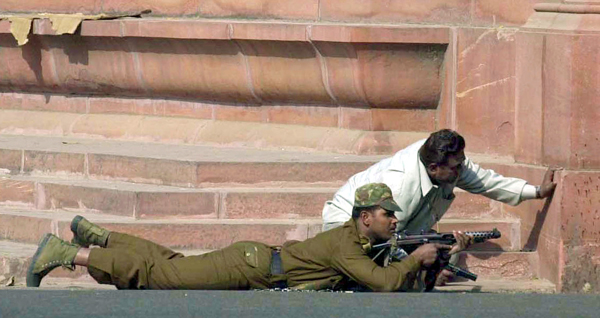
Photo: An Indian commando takes-up position besides a plain clothed policeman near Indian parliament building in New Delhi, December 13, 2001. A suicide squad stormed India’s parliament complex on Thursday, killing at least six people in an unprecedented attack on the seat of power of the world’s biggest democracy. REUTERS
22 December: Richard Reid becomes better known to the world as the “Shoe Bomber”.
The season of fear was capped by the unsuccessful attempt by unlikely suspect, UK-born Richard Reid. He was stopped by passengers on American Airlines Flight 63 from Paris to Miami when he tried to ignite the plastic explosive hidden in his hollowed-out shoe soles. And ever since Richard Reid, millions of innocent passengers are forced to take off their shoes when going through airport security – a fact that alone makes Reid probably the most successful terrorist in history. He is currently serving life without parole in the US.
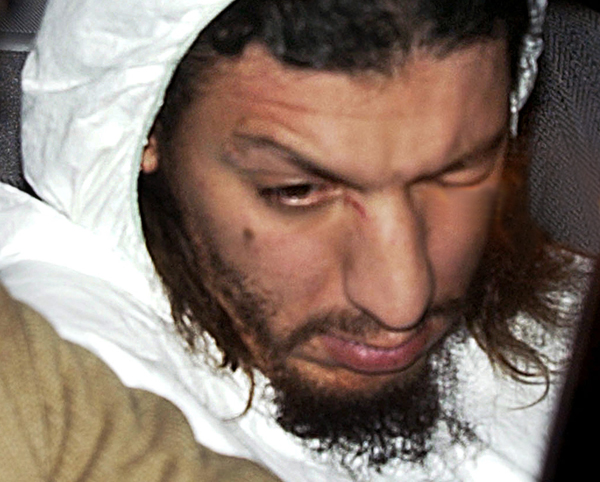
Photo: Federal prosecutors on December 23, 2001 identified a 28-year-old man who allegedly tried to blow up a trans-Atlantic flight as Richard C. Reid, and the FBI laboratory said his shoes contained two explosive devices. They charged Reid in a criminal complaint with interfering with the performance of duties of flight crew members or attendants by assault and intimidation after he tried to set his shoes aflame and ignite the explosives as he sat in the coach section of a Boeing 767 on Dec. 22. Passengers and 12 crew members subdued Reid, who was carrying a British passport issued by the British Embassy in Brussels, Belgium, on Dec. 7. French authorities have identified him as Tariq Rashid from Sri Lanka. He was photographed while being taken from the Massachusetts State Police barracks at Logan International Airport in Boston December 22. REUTERS/Brian Snyder.


















 Become an Insider
Become an Insider